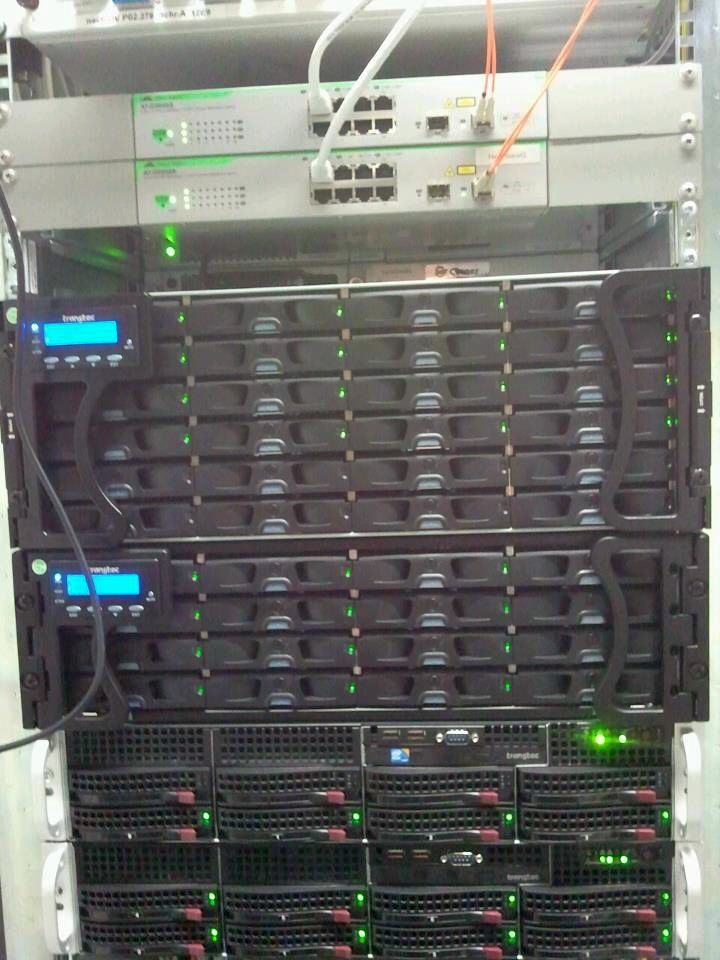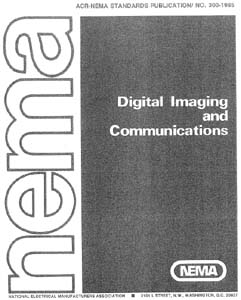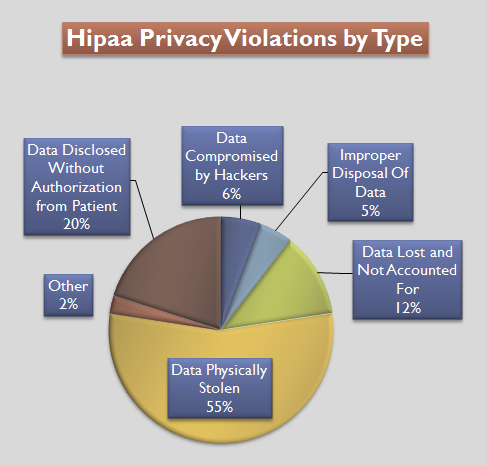|
Ambra Health
Ambra Health (formerly DICOM Grid), is a software company that provides solutions for medical image sharing of DICOM and non-DICOM data between patients, physicians, and hospitals. History The company was founded as DICOM Grid, Inc. in 2004 to make digital medical imaging on a cloud based platform. DICOM Grid launched their cloud based platform as DG Suite, that allows to store diagnostic imaging and health data in its platform that can be accessed and shared by the healthcare providers and patients. The platform was later approved under the Health Insurance Portability and Accountability Act (HIPAA). It received best in KLAS awards continuously from 2014 to 2017 and also received 2016 SIIA CODiE award. In September 2016, the company re-branded itself to Ambra Health a DBA of DICOM Grid, Inc. As of 2017, the company claims to have 750 healthcare providers using its platform. Products and Services * DICOM and non-DICOM image viewer * Medical Image Sharing * Image routing * Vendor ... [...More Info...] [...Related Items...] OR: [Wikipedia] [Google] [Baidu] |
Healthcare
Health care or healthcare is the improvement of health via the prevention, diagnosis, treatment, amelioration or cure of disease, illness, injury, and other physical and mental impairments in people. Health care is delivered by health professionals and allied health fields. Medicine, dentistry, pharmacy, midwifery, nursing, optometry, audiology, psychology, occupational therapy, physical therapy, athletic training, and other health professions all constitute health care. It includes work done in providing primary care, secondary care, and tertiary care, as well as in public health. Access to health care may vary across countries, communities, and individuals, influenced by social and economic conditions as well as health policies. Providing health care services means "the timely use of personal health services to achieve the best possible health outcomes". Factors to consider in terms of health care access include financial limitations (such as insurance coverage), geo ... [...More Info...] [...Related Items...] OR: [Wikipedia] [Google] [Baidu] |
Health Information Technology
Health information technology (HIT) is health technology, particularly information technology, applied to health and health care. It supports health information management across computerized systems and the health information exchange, secure exchange of health information between consumers, health professional, providers, payment, payers, and health care quality, quality monitors. Based on a 2008 report on a small series of studies conducted at four sites that provide ambulatory care – three U.S. medical centers and one in the Netherlands, the use of electronic health records (EHRs) was viewed as the most promising tool for improving the overall quality, safety and efficiency of the health delivery system. Risk-based regulatory framework for health IT September 4, 2013 the Health IT Policy Committee (HITPC) accepted and approved recommendations from the Food and Drug Administration Safety and Innovation Act (FDASIA) working group for a risk-based regulatory framework for heal ... [...More Info...] [...Related Items...] OR: [Wikipedia] [Google] [Baidu] |
Life Sciences
This list of life sciences comprises the branches of science that involve the scientific study of life – such as microorganisms, plants, and animals including human beings. This science is one of the two major branches of natural science, the other being physical science, which is concerned with non-living matter. Biology is the overall natural science that studies life, with the other life sciences as its sub-disciplines. Some life sciences focus on a specific type of organism. For example, zoology is the study of animals, while botany is the study of plants. Other life sciences focus on aspects common to all or many life forms, such as anatomy and genetics. Some focus on the micro-scale (e.g. molecular biology, biochemistry) other on larger scales (e.g. cytology, immunology, ethology, pharmacy, ecology). Another major branch of life sciences involves understanding the mindneuroscience. Life sciences discoveries are helpful in improving the quality and standard of life and h ... [...More Info...] [...Related Items...] OR: [Wikipedia] [Google] [Baidu] |
Chief Executive Officer
A chief executive officer (CEO), also known as a central executive officer (CEO), chief administrator officer (CAO) or just chief executive (CE), is one of a number of corporate executives charged with the management of an organization especially an independent legal entity such as a company or nonprofit institution. CEOs find roles in a range of organizations, including public and private corporations, non-profit organizations and even some government organizations (notably state-owned enterprises). The CEO of a corporation or company typically reports to the board of directors and is charged with maximizing the value of the business, which may include maximizing the share price, market share, revenues or another element. In the non-profit and government sector, CEOs typically aim at achieving outcomes related to the organization's mission, usually provided by legislation. CEOs are also frequently assigned the role of main manager of the organization and the highest-ranking offic ... [...More Info...] [...Related Items...] OR: [Wikipedia] [Google] [Baidu] |
Medical Image Sharing
Medical image sharing is the electronic exchange of medical images between hospitals, physicians and patients. Rather than using traditional media, such as a CD or DVD, and either shipping it out or having patients carry it with them, technology now allows for the sharing of these images using the cloud. The primary format for images is DICOM (Digital Imaging and Communications in Medicine). Typically, non-image data such as reports may be attached in standard formats like PDF (Portable Document Format) during the sending process. Additionally, there are standards in the industry, such as IHE Cross Enterprise Document Sharing for Imaging (XDS-I), for managing the sharing of documents between healthcare enterprises. A typical architecture involved in setup is a locally installed server, which sits behind the firewall, allowing secure transmissions with outside facilities. In 2009, the Radiological Society of North America launched the "Image Share" project, with the goal of givi ... [...More Info...] [...Related Items...] OR: [Wikipedia] [Google] [Baidu] |
Vendor Neutral Archive
A Vendor Neutral Archive (VNA) is a medical imaging technology in which images and documents (and potentially any file of clinical relevance) are stored (archived) in a standard format with a standard interface, such that they can be accessed in a vendor-neutral manner by other systems. This terminology is used as distinct from a traditional Picture Archiving and Communications Systems (PACS), although there is debate about where the boundary between a VNA and a PACS lies along the continuum of their common features. Definition The simplest definition is "a medical device that stores medical images in a standard format with a standard interface, such that they can be accessed in a vendor-neutral manner by other systems". So-called "vendor neutrality" is implied by the standard format and interface, and the neutrality is with respect to vendor-specific devices that produce or consume those images (e.g., for display, distribution or analysis, with or without specific workflows, su ... [...More Info...] [...Related Items...] OR: [Wikipedia] [Google] [Baidu] |
Picture Archiving And Communication System
A picture archiving and communication system (PACS) is a medical imaging technology which provides economical storage and convenient access to images from multiple modalities (source machine types). Electronic images and reports are transmitted digitally via PACS; this eliminates the need to manually file, retrieve, or transport film jackets, the folders used to store and protect X-ray film. The universal format for PACS image storage and transfer is DICOM (Digital Imaging and Communications in Medicine). Non-image data, such as scanned documents, may be incorporated using consumer industry standard formats like PDF (Portable Document Format), once encapsulated in DICOM. A PACS consists of four major components: The imaging modalities such as X-ray plain film (PF), computed tomography (CT) and magnetic resonance imaging (MRI), a secured network for the transmission of patient information, workstations for interpreting and reviewing images, and archives for the storage and re ... [...More Info...] [...Related Items...] OR: [Wikipedia] [Google] [Baidu] |
DICOM
Digital Imaging and Communications in Medicine (DICOM) is the standard for the communication and management of medical imaging information and related data. DICOM is most commonly used for storing and transmitting medical images enabling the integration of medical imaging devices such as scanners, servers, workstations, printers, network hardware, and picture archiving and communication systems (PACS) from multiple manufacturers. It has been widely adopted by hospitals and is making inroads into smaller applications such as dentists' and doctors' offices. DICOM files can be exchanged between two entities that are capable of receiving image and patient data in DICOM format. The different devices come with DICOM Conformance Statements which state which DICOM classes they support. The standard includes a file format definition and a network communications protocol that uses TCP/IP to communicate between systems. The National Electrical Manufacturers Association (NEMA) holds the cop ... [...More Info...] [...Related Items...] OR: [Wikipedia] [Google] [Baidu] |
Medical Image Sharing
Medical image sharing is the electronic exchange of medical images between hospitals, physicians and patients. Rather than using traditional media, such as a CD or DVD, and either shipping it out or having patients carry it with them, technology now allows for the sharing of these images using the cloud. The primary format for images is DICOM (Digital Imaging and Communications in Medicine). Typically, non-image data such as reports may be attached in standard formats like PDF (Portable Document Format) during the sending process. Additionally, there are standards in the industry, such as IHE Cross Enterprise Document Sharing for Imaging (XDS-I), for managing the sharing of documents between healthcare enterprises. A typical architecture involved in setup is a locally installed server, which sits behind the firewall, allowing secure transmissions with outside facilities. In 2009, the Radiological Society of North America launched the "Image Share" project, with the goal of givi ... [...More Info...] [...Related Items...] OR: [Wikipedia] [Google] [Baidu] |
Diagnostic Imaging
Medical imaging is the technique and process of imaging the interior of a body for clinical analysis and medical intervention, as well as visual representation of the function of some organs or tissues (physiology). Medical imaging seeks to reveal internal structures hidden by the skin and bones, as well as to diagnose and treat disease. Medical imaging also establishes a database of normal anatomy and physiology to make it possible to identify abnormalities. Although imaging of removed organs and tissues can be performed for medical reasons, such procedures are usually considered part of pathology instead of medical imaging. Measurement and recording techniques that are not primarily designed to produce images, such as electroencephalography (EEG), magnetoencephalography (MEG), electrocardiography (ECG), and others, represent other technologies that produce data susceptible to representation as a parameter graph versus time or maps that contain data about the measurement lo ... [...More Info...] [...Related Items...] OR: [Wikipedia] [Google] [Baidu] |
Health Insurance Portability And Accountability Act
The Health Insurance Portability and Accountability Act of 1996 (HIPAA or the Kennedy– Kassebaum Act) is a United States Act of Congress enacted by the 104th United States Congress and signed into law by President Bill Clinton on August 21, 1996. It modernized the flow of healthcare information, stipulates how personally identifiable information maintained by the healthcare and healthcare insurance industries should be protected from fraud and theft, and addressed some limitations on healthcare insurance coverage. It generally prohibits healthcare providers and healthcare businesses, called ''covered entities'', from disclosing protected information to anyone other than a patient and the patient's authorized representatives without their consent. With limited exceptions, it does not restrict patients from receiving information about themselves. It does not prohibit patients from voluntarily sharing their health information however they choose, nor does it require confidential ... [...More Info...] [...Related Items...] OR: [Wikipedia] [Google] [Baidu] |




